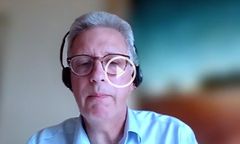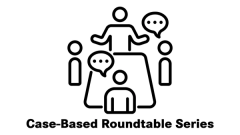
Improving Tolerability of Polatuzumab + BR for R/R DLBCL
Ian W. Flinn, MD, PhD, discusses his experience using the combination of polatuzumab vedotin-piiq plus bendamustine and rituximab for patients with relapsed/refractory diffuse large B-cell lymphoma.
Episodes in this series

Ian W. Flinn, MD, PhD, director of lymphoma research at Sarah Cannon Cancer Institute, discusses his experience using the combination of polatuzumab vedotin-piiq (Polivy) plus bendamustine and rituximab (Rituxan; pola-BR) for patients with relapsed/refractory diffuse large B-cell lymphoma (R/R DLBCL).
The antibody-drug conjugate pola-BR was approved based on a phase 2 study (NCT02257567) for patients who had at least 2 prior therapies for DLBCL. Flinn says he’s seen good results for this treatment and it serves a valuable role in this setting.
He notes that bendamustine is associated with hematopoietic toxicity that can be difficult for patients to tolerate. Since polatuzumab is believed to be the most active drug in the regimen, he often reduces the dose of bendamustine, which leads to more tolerability with maintained efficacy.
Additionally, Flinn says this therapy can be used with no bendamustine as a bridging therapy to chimeric antigen receptor (CAR) T-cell therapy or between leukapheresis and CAR T-cell infusion. Bendamustine may decrease T-cell counts which would interfere with leukapheresis for CAR T-cell production.
TRANSCRIPTION:
0:08 | I think that it has surprisingly great results, and for many patients. I often dose reduce the bendamustine because I think many people think the most active therapy here is the polatuzumab vedotin, and we're not 100% sure how much the bendamustine adds to it. It does—because of the underlying bendamustine rather than the polatuzumab—there is hematopoietic toxicity associated with this. And so, by decreasing the bendamustine, you can make it a little bit more tolerable.
The other thing is that this therapy is supposed to be given on a 21-day basis; we know that that's difficult for any bendamustine-containing regimen. I think by decreasing on bendamustine, it makes it easier for patients to tolerate it. So I've had great results. Sometimes I use this regimen without the bendamustine at all for those patients that I’m trying to bridge to CAR T cells or even for those patients that are between having their leukapheresis and receiving the CAR T cells. It's not a bad therapy to bridge patients to that more definitive treatment.














































